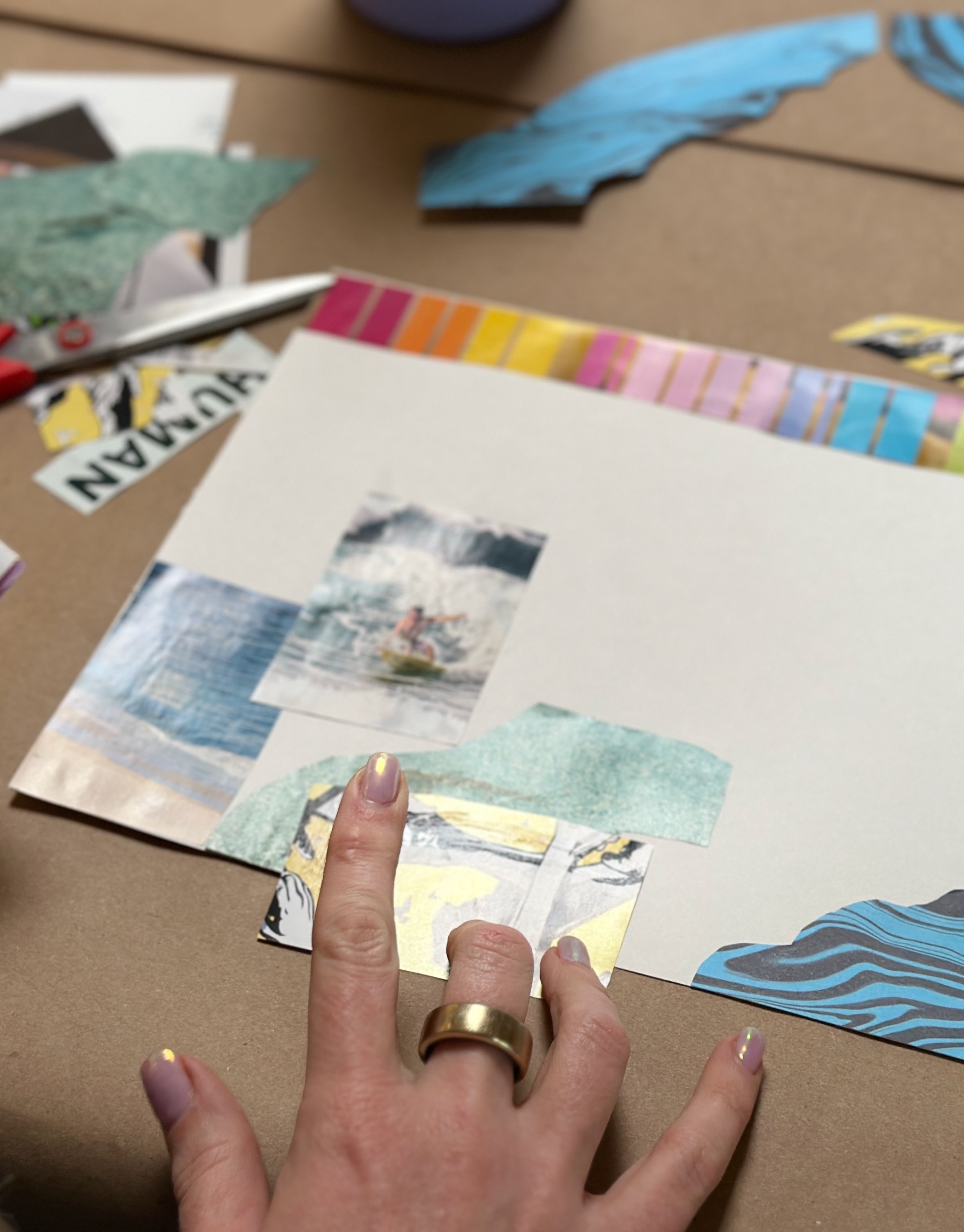Transform healing through creativity.
Using your creative expression to go places words cannot.
What is art therapy?
Art therapy integrates creative expression with therapeutic support, offering pathways to healing that go beyond verbal communication alone. As a Board Certified Art Therapist, I guide you through using art-making to access emotions, memories, and experiences that might exist before or beyond language.
The creative process can bypass intellectual defenses, reveal patterns not easily recognized through talking alone, and provide tangible metaphors for abstract feelings. This approach is particularly powerful for navigating experiences of 'in-betweenness,' processing pre-verbal trauma and complex grief, when searching for a sense of self, and exploring aspects of identity that resist simple definition.
Discover what emerges when you create.
How art therapy works
Your creative expression becomes a pathway to transformation.
In our sessions together, I create a safe, supportive environment where creative expression becomes a natural extension of our therapeutic relationship. No artistic experience is needed—the focus is always on the process, not the product.
Art-making in therapy might involve drawing, painting, collage, writing, photography, or other media, depending on what resonates with you and your current struggles. Sometimes we'll use art to explore specific themes or emotions; other times, creative expression may help with regulation and grounding. As we work with the images that emerge, we discover connections, patterns, and insights that might remain hidden in conversation alone.
My approach often integrates art therapy with other modalities to create a comprehensive healing experience. Art-making can serve as powerful preparation for EMDR work, helping to identify and externalize trauma memories before processing. Creative expression may also be incorporated into somatic awareness practices, helping you connect with bodily sensations through visual representation. This integrated approach allows us to address your needs on multiple levels—cognitive, emotional, and sensory—creating more complete pathways to healing and integration.
Each session is tailored to your unique needs and experiences. For some clients, art becomes a primary language of therapy; for others, it complements verbal exploration. What remains consistent is my commitment to honoring your pace, preferences, and process as we work together.
Art therapy can help you with…
Integrating fragmented experiences - Transform feelings of disconnection into a more cohesive sense of self
Accessing pre-verbal memories - Reach experiences that exist beyond language through visual expression
Processing complex emotions - Express feelings that might be difficult to articulate through words alone
Building self-awareness - Discover patterns and insights that expand your understanding of yourself
Cultivating creative resilience - Develop flexible approaches to life's challenges through the creative process
Frequently asked questions about Art therapy
FAQs
-
Art therapy offers distinctive pathways to healing that complement and enhance traditional verbal approaches. Through creative expression, you can give form to internal experiences, making them visible and tangible in ways that verbal communication alone cannot provide. This process helps you connect with emotions, memories, and experiences that exist beyond words—particularly valuable for early memories, complex emotions, and questions of identity and belonging. Art therapy engages multiple dimensions of your experience—sensory, emotional, and cognitive—often revealing connections and insights that emerge unexpectedly. The visual record of your journey also provides a concrete way to witness your growth and transformation over time.
-
Material choice is usually up to you, though I may suggest or encourage certain materials from time to time. The focus is on materials that allow for emotional expression rather than technical complexity. If you already have art materials you enjoy using, you're welcome to incorporate those, and I am happy to make suggestions of supplies you can purchase. Remember that in art therapy, the process and emotional expression matter more than the finished product or technical skill.
-
I use a HIPAA-compliant Zoom platform for secure online sessions. You don't need a Zoom account—just a device with adequate internet connection and camera. For art-making portions, I'll provide a supply list of simple materials to have on hand. Many clients enjoy the comfort of creating in their own space, and we'll work together to ensure the online environment supports your therapeutic process. I've found that meaningful art therapy is just as effective online as in person.
-
Art therapy differs fundamentally from art classes or general 'art as therapy' approaches in its therapeutic intention and professional framework. While art classes focus on developing artistic skills and techniques, and casual 'art as therapy' might promote general wellbeing through creative activities, formal art therapy is a clinical mental health discipline. As a Board Certified Art Therapist, I bring specialized training in both psychological principles and artistic processes, allowing me to guide you through creative expression specifically designed to address your therapeutic goals. Art therapy sessions are tailored to your unique needs, using the creative process as a tool for deeper psychological work rather than focusing on aesthetic outcomes or general relaxation.
-
Yes, you always retain ownership of your artwork created during therapy sessions. For online sessions, since you're creating in your own space, you naturally keep the physical artwork. I recommend finding a private, safe place to store your pieces between sessions, as we may refer back to them as part of your therapeutic journey. With your permission, I may keep digital photographs of your artwork in your secure, confidential file to help us track themes and progress over time. How we use, store, or potentially dispose of artwork can become an important part of our therapeutic process, and we'll discuss your preferences and comfort level regarding your creations.



